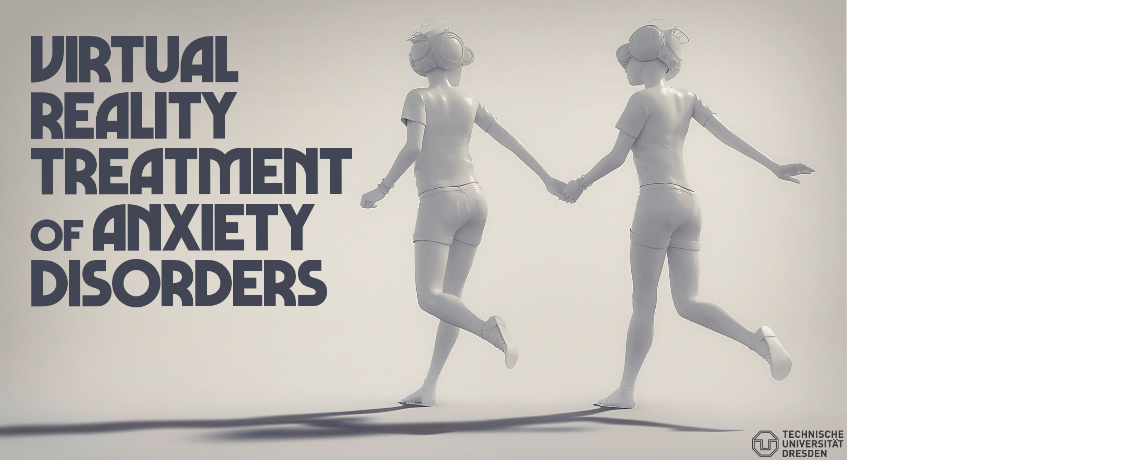
Embracing the unknown: Virtual reality treatment of anxiety disorders |
Medical Need
Anxiety disorders are the most prevalent mental disorders, with 12-month-prevalence estimates of 14% worldwide and 15.3% in Germany. They cause high individual impairment and socioeconomic costs and, when untreated, tend to persist and increase the risk to develop comorbid psychopathology (e.g., depression, substance use disorders). Exposure-based cognitive behavioral therapy represents the first-line psychological treatment for anxiety disorders. It involves repeated, prolonged confrontation with feared or avoided (yet safe) stimuli, until the patient learns to manage and downregulate avoidance and safety behaviors and exhibits a significant reduction or reinterpretation of their fear.
We aim to develop new VR therapeutic treatments for anxiety, focusing on three dimensions: rapid creation of highly customized scenarios in response to specific patient needs; shared virtual experiences in which therapists accompany patients within VR; and natural two-way communication during immersion.
Anxiety disorders, virtual reality, exposure therapy, remote psychotherapy, personalized treatment
Abstract |
The goal of the project is to develop and evaluate novel VR-based therapies in real therapeutic relationships. This involves two components: a VR software framework tailored for “rapid-prototyping” of novel VR therapies and a collaboration platform between practicing therapists and VR engineers. The outcome is a framework encompassing the following 6 key elements:
Rapid creation of immersive virtual scenarios tailored to the specific needs and context of the patient. We hope to equip psychotherapists with the tools and skills to author their own virtual scenarios, without the need of large teams of software developers and 3D artists.
Skills and know-how. Development of VR therapy simulations still depends on the input of developers and therapists with specific skills. Hence, at the heart of the project is the training of a small team of psychotherapists and VR engineers with the requisite skills to work with one another in the construction of these simulations.
Workshops to bring together practicing psychotherapists and psychotherapy students with VR experts.
Shared virtual experiences, in which therapists can accompany patients inside the virtual world.
Remote therapy. With shared virtual experiences, two-way communication and the availability of affordable consumer VR devices comes the possibility of administering therapy remotely. We aim to demonstrate the potential of VR exposure for remote therapy, with particular attention given to patients unable to leave the home.
Integration of translational findings on inhibition learning and fear extinction into virtual exposure, to enable therapists to maximize long-term treatment effects.

